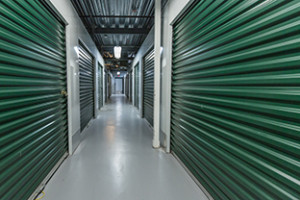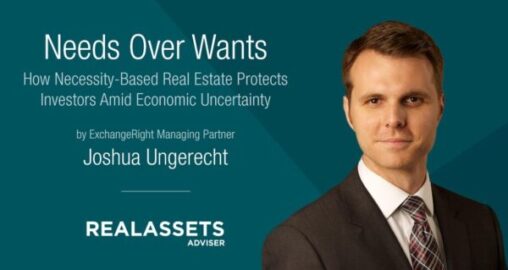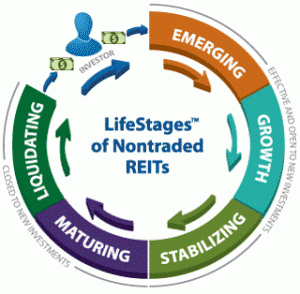Leitbox Targeted Approach to Self-storage Development

October 8, 2019 | James Sprow | Blue Vault
Blue Vault recently spoke with Bill Leitner at Leitbox Portfolio Partners Self-storage Fund I, LLC. Leitner is promoting the Reg D offering that will target developments of self-storage properties in locations that draw on his company’s 25-year experience building retail projects. Leitbox is unlike those REITs that, for the most part, acquire existing independently-owned self-storage properties and build value by bringing professional management, economies of scale, branding and marketing expertise. Instead, Leitbox will use experience in retail property developments to build new self-storage facilities in targeted locations that meet their criteria for growth, employment and a significant percentage of renter households. Their goal is to create capital gains for investors.
Self-storage for Leitner has been an asset class that has been very compelling for two key reasons that are very easy to explain. The two continuing and enduring trends in the U.S. that bode well for the self-storage asset class are urbanization and downsizing.
The urbanization movement is moving from the 24-hour gateway cities down to the 12 to 16-hour cities, or from the primary to the secondary and even tertiary cities. With urbanization and exponential apartment growth come new urban dwellers, resulting in downsizing and a need for a place to store their extra possessions. The downsizing movement is due to the confluence of the Baby Boomer and Millennial generations. These demographic trends have driven year over year increases in self-storage usage across the nation, and they are trends that Leitner believes will be long-lasting. Urbanization and downsizing are here to stay for the long term, sustaining the demand for self-storage.
The Leitbox team begins their analysis by looking at the macroeconomic environment through the lens of their proprietary selection process to find growth opportunities in certain areas. They classify potential markets as A, B or C according to their preferred demographic profile, which includes a high percentage of renting households. Within the most attractive locales, they take what Leitner refers to as a “sharpshooter” developer’s perspective.
Leitner says that targeting third and fourth generation storage developments will resemble retail site selection. There is a lot of symmetry between their 25-year retail experience with retail and their self-storage development process. They look for super convenient and efficient locations. They also overcome potential local resistance to locations by deploying a multi-story approach, integrating retail into the project. Their typical solution is a multi-story design with retail on the ground floor. Drawing on their experience in developing retail properties, they reduce risk by following a recurring prototype design, enabling them to execute the construction process more quickly. Retailers are always concerned about parking availability, but once they show the retailer that they may average only six visitors a day to the self-storage facility, the retailer typically doesn’t have a problem with their traffic.
We asked about their plans to construct and hold self-storage properties. Leitner explained that self-storage properties are a unique asset class in that you can exit at different stages: with a certificate of occupancy, in the lease-up phase, or as a stabilized property. It really is the only asset with those three milestones and where you can exit at any of those three stages. Leitbox will aim to create capital gains with their developments and move on to the next project, rather than holding a portfolio of properties.
While Leitbox is based in Birmingham, Alabama, and a lot of growth opportunities present themselves in the “Sun Belt” with Baby Boomers retiring and Millennials moving where employment growth has been strong, Leitbox is able to do projects anywhere in the U.S. Their best opportunities are in areas with population growth around 3%, far above the U.S. average. Their “pre-travel” process to pick attractive locations includes steps to avoid areas with low barriers to entry and potential over-capacity which is already evident in certain urban locales. They check with local developers to make sure they aren’t entering a market with those problems. Because Leitbox is relatively small compared to the listed self-storage REITs and even the nontraded REITs, and because they focus on development rather than purchasing existing self-storage, their “sharpshooter” development approach does not bring them into competition with others in the sector. Rather, once a project is completed, it may be purchased by self-storage REITs, or by high net worth individuals looking for income from investments that are not as large as a typical multifamily asset.
On a macro level, since 1994 self-storage has outperformed other investment classes, even during the great recession. Institutional investors have become increasingly interested in the sector. Self-storage cap rates have been within 5 basis points of multifamily rates. The asset generally has a very low break-even in terms of occupancy and rental rates. Unlike multifamily, when a tenant moves out there is very little expense required to prepare for the next tenant. And customers are usually “sticky,” because it can take effort to pack up and move. Cleaning, painting, sealing the parking area, all require very limited capital expenditures by owners over time. But, as with multifamily properties, rental rates can be adjusted to deal with changes in the economy and the local market. All of these features have made self-storage a favorite sector in the broader CRE environment.











